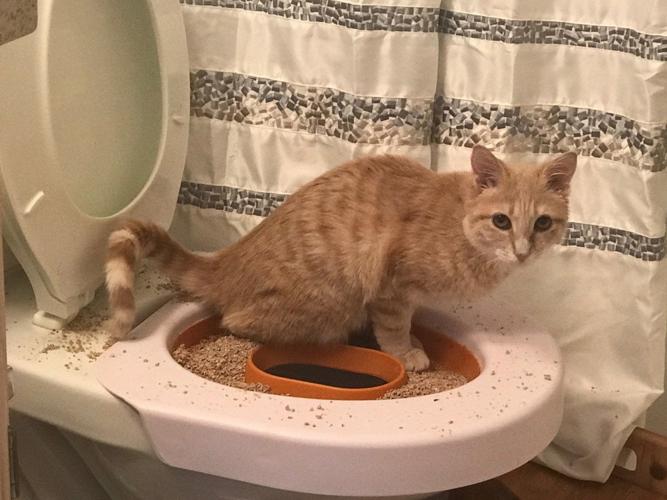Learning Why Animal Waste Should Not Be Flushed Down the Toilet
Learning Why Animal Waste Should Not Be Flushed Down the Toilet
Blog Article
What're your ideas about Should you flush animal waste down the toilet?

When it pertains to throwing away waste, especially animal waste, many people typically consider the hassle-free choice of flushing it down the toilet. However, this apparently simple service can have serious effects for the atmosphere and public health. In this post, we'll explore why flushing animal waste down the toilet is a poor concept and offer different techniques for correct disposal.
Introduction
Appropriate garbage disposal is important for maintaining environmental sustainability and public health. While it may appear safe to purge animal waste down the commode, it can cause numerous issues, both for the atmosphere and human well-being.
Risks of flushing pet waste
Ecological impact
Flushing pet waste presents harmful bacteria and pathogens into waterways, which can adversely affect water ecological communities. These pathogens can infect water sources and harm aquatic life, interrupting fragile ecological communities.
Public health concerns
Pet waste includes dangerous germs such as E. coli and Salmonella, which can posture severe wellness risks to humans. Purging animal waste down the commode can pollute water products, causing the spread of diseases and infections.
Alternatives to flushing
As opposed to purging pet waste down the commode, there are numerous different disposal techniques that are extra eco-friendly and sanitary.
Composting
Composting pet waste is an environmentally friendly method to take care of it. By composting, raw material is broken down into nutrient-rich dirt, which can be utilized to feed gardens and plants.
Landfill disposal
Taking care of animal waste in a landfill is an additional choice. While not as eco-friendly as composting, it is a much safer choice to flushing, as it stops the contamination of water resources.
Family pet waste disposal systems
There are specific family pet garbage disposal systems available that safely and hygienically deal with pet waste. These systems usually use enzymes to break down waste and get rid of odors.
Actions to proper animal waste disposal
To make sure proper disposal of pet waste, adhere to these steps:
Scooping and getting waste
Frequently scoop and bag pet waste making use of biodegradable bags. This protects against waste from polluting the atmosphere.
Making use of assigned waste containers
Dispose of bagged animal waste in assigned waste containers, such as compost containers or land fill bins. Prevent flushing it down the toilet in any way costs.
Cleaning up litter boxes and pet dog areas frequently
Frequently tidy can and pet areas to prevent the buildup of waste and bacteria. Usage pet-safe cleansing items to preserve hygiene.
Advantages of appropriate disposal techniques
Embracing correct disposal techniques for animal waste uses several advantages:
Lowered environmental pollution
Correct disposal methods reduce the threat of environmental pollution, shielding waterways and ecosystems from contamination
Minimized danger of water contamination.
By staying clear of flushing pet waste down the commode, the risk of water contamination is dramatically reduced, guarding public health.
Enhanced cleanliness and health
Correct disposal methods promote better sanitation and hygiene, creating a much safer atmosphere for both humans and animals.
Conclusion
Finally, purging animal waste down the toilet is harmful to the setting and public health. By embracing alternate disposal techniques and following correct waste monitoring methods, we can minimize the adverse effect of pet waste and contribute to a cleaner, much healthier planet.
What To Do With Dog Poo – The Do's And Don'ts Of Disposing Of Faeces
Dog poo bins
Some councils provide dedicated dog waste bins in popular dog-walking areas that can take dog poo that has been bagged but you can legally dispose of dog waste in any public litter bin, as long as it is securely bagged. This also applies to your wheelie bin at home.
Do not flush
Water companies do not recommend flushing dog faeces down the toilet because certain parasites can survive the water processing treatment and are potentially harmful to humans. You should also never consider flushing dog poo that has been bagged down the toilet as the bags will not break down and instead create severe blockages in the sewage system.
In the woods
The Forestry Commission promotes a ‘stick and flick’ method for dealing with waste in the woods. This means finding a stick and using it to flick any poo from off the path so that it is out of the way of other walkers. You could also bury it as long as it is not in an area where there might be livestock.
Livestock
Parasites found in dog poo can be transmitted to livestock if they inadvertently eat infected faeces that has been left on grazing land. This could result in the death of sheep or abortion in cattle so you should always make sure you pick up your dog’s waste in fields where livestock could be present.

I hope you liked our topic about Don't Flush Your Pets Poo Down The Loo, Vet Warns. Thank you for taking time to read through our blog post. Don't hesitate to set aside a second to distribute this blog posting if you enjoyed reading it. Thank you so much for your time invested reading it.
Book Now! Report this page